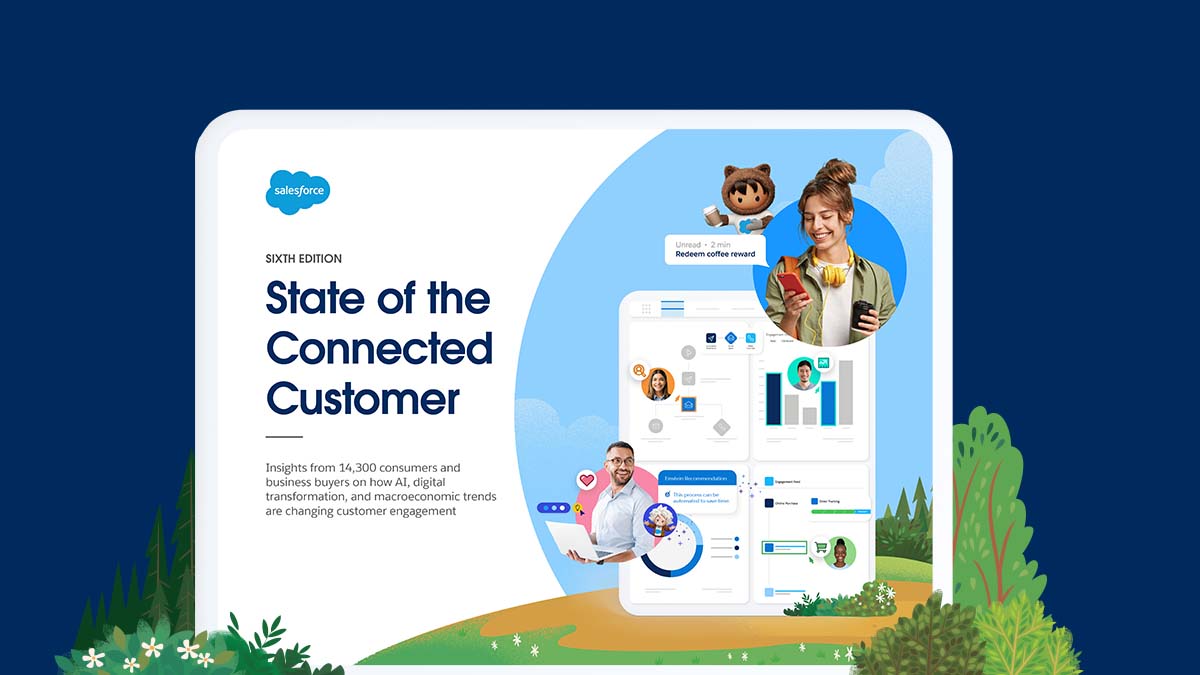Your Data is Everything — Protect it With Digital Sovereignty Standards

Digital sovereignty is the answer to anchoring your data in the AI boom.

Marg Pascucci
This article was co-written by Marg Pascucci and Matthew Parin.
You want your data to be safe. And your customers expect it. But there is a growing AI trust gap among consumers that compels companies to examine all internal practices regarding data.
Enter: digital sovereignty.
Digital sovereignty, or how companies manage their digital data and infrastructure, is the bedrock for building back this trust. In fact, 87% of IT and analytics leaders agree that higher priority needs to be placed on data management.
Salesforce has always been committed to digital sovereignty. It’s been with us our entire history. For us, it’s about giving our customers control of their data with the compliance tools needed to use our technology and AI, anywhere they operate. It’s also about sharing what we know on how to create airtight digital infrastructure, so every company is equipped in the age of AI.
Digital sovereignty matters because it’s become a larger story on data in the digital realm, and a pressing topic of concern among global entities and individuals alike.
Table of Contents
- What is digital sovereignty?
- Three core principles of digital sovereignty
- Why it’s hard to get it digital sovereignty “right”
- How digital sovereignty innovations improve your tech stack
- The meaning of data in a sovereign future
What is digital sovereignty?
In short, digital sovereignty is how your organization manages and maintains autonomy in their digital environment. It encompasses organizations’ right to control their own digital data and infrastructure — especially the ability to make decisions about how it’s used.
Digital sovereignty is like a vault, and data’s the treasure inside. Only the owner of the vault controls who has access and how it’s protected.
In the same way you protect your vault from unauthorized intruders, digital sovereignty requires you to protect your data from malicious actors or other threats.
Why is digital sovereignty important?
Digital sovereignty helps organizations mitigate risks and comply with regulatory standards in the face of potential breaches, unauthorized access, and exploitation of data. It is also an outward declaration that the company is committed to their customers.
This proactive approach is paramount in a digital landscape driven by AI, where companies’ use of data is ultra-scrutinized. Companies that uphold strong digital sovereignty set themselves apart for building strong customer trust. And customer trust is a crucial tenet for long-term growth.
Prepare for AI, while scaling with trust
Discover six strategies to infuse your generative AI with a layer of trust.


Three core principles of digital sovereignty
Organizations that value digital sovereignty integrate contractual, technical, and organizational measures right into the product’s onset.
These measures address the localization, protection, and ownership dimensions of the digital sovereignty regulations and standards around the world. Let’s break down the measures themselves, and what they look like:
- Contractual measures:
These consist of agreements such as the various data processing agreements tailored to address customer-specific needs.
We see this in protections such as the UK Binding Corporate Rules and the EU Binding Corporate Rules (BCRs), in which companies must be approved to transfer personal data outside of the EU. The BCRs are the gold standard for cross-border data transfer, as they reflect the highest data protection standards in the world.
- Technical measures:
These measures encompass a broad scope of controls in place to govern and protect the data customers entrust to an organization, such as offering external key management capabilities that build encryption and resilience.
Another way to bring technical measures to AI is with an inbuilt trust layer, which masks sensitive data, encrypts data with transport-layer security, and uses zero-data retention to ensure AI models forget prompts and outputs after processing.
- Organizational measures:
These involve the policies and procedures followed to ensure the security and protection of data throughout its lifecycle. This includes third-party audits, compliance certifications, access controls, incident response protocols, and ethical guidelines.
Another way this shows up is through unique offerings like Hyperforce Operating Zones. Starting with the EU Operating Zone, which provides additional protections regarding the transfer of customer data outside the EU, our Hyperforce Operating Zones provide additional protections regarding the transfer of customer data.
These three measures are designed so organizations can be confident in embracing digital sovereignty best practices from the start.
Why it’s hard to get digital sovereignty “right”
Trust is earned. In friendships, relationships, and companies, we all know that trust is built through actions and consistency over time. But on top of trust, digital sovereignty could be a challenge for many organizations due to several reasons:
- Complexity of regulations: For organizations operating in multiple jurisdictions, it’s important to keep up with compliance requirements, which vary by geography. And with data flowing freely across borders, ensuring compliance with regulations requires careful coordination and understanding of legal frameworks.
- New technologies: The pace of emerging technologies — such as generative AI — introduce new complexities and risks, which in turn, make it difficult for digital sovereignty. Organizations must stay on their toes to prioritize data privacy and data ownership in these new contexts.
- Changing customer expectations: As consumers become more aware of data privacy and security, organizations are facing pressure to meet higher standards for protecting personal information. Companies that fail to meet these expectations risk losing customer trust.
- Data security threats: Data breaches, malware attacks, and other cybersecurity threats are evolving as well, so organizations must upkeep and strengthen their security posture. For small to midsize organizations, it could be a hurdle to allocate resources to implement and keep data protection measures.
How do your customers feel about generative AI?
Learn what 14,300 consumers and business buyers worldwide have to say about the future of customer engagement in our State of the Connected Customer Report.




How digital sovereignty innovations improve your tech stack
The diverse business, technical, and operational requirements of global customers create varying dynamics in terms of how digital sovereignty influences your business.
Localization
To have proper data storage, you must think about additional protections such as how and where data is transferred. You also need an addendum that provides the legal framework for these transfers.
Initiatives like Hyperforce broaden customer options for data storage across borders independently. Another way is to consider initiatives that broaden customer options for data storage across borders.
And with EU-to-US data flows facilitating $7.3 trillion in economic relationships, certification under new data privacy frameworks, such as the EU-UD Data Privacy Framework, is another way for companies to show their commitment to protecting customer data.
Protection
Privacy, security, and encryption are also key aspects — especially the ability to encrypt data in transit with zero-trust architecture, and even to bring your own encryption keys. These measures help build greater protection against things like extraterritorial requests for data. People should have access to only the data they need, and no more.
Security should also be built into every layer, including infrastructure elements such as replication, backup, disaster recovery planning, and network services that provide threat detection.
Ownership
Digital sovereignty means ownership over your data, such as having the option to delete (and reinstate, if necessary) data upon request. It also means the ability to be portable, or used across different coding languages and APIs.
This helps organizations meet their obligations under regulatory frameworks like the GDPR, allowing both organizational- and individual-level data removal.
Privacy consent mechanisms also empower customers to set their preferences for how their data is used and tracked. Data management is complex, and having a comprehensive suite of capabilities can help organizations navigate digital sovereignty successfully.
The meaning of data in a sovereign future
As you look to the future, it’s important to remain guided by your core values and deliver ethical, secure, privacy-first, and inclusive design solutions at every turn. Ultimately, data will be characterized by trusted data exchanges and ownership, which will determine which companies last in a competitive digital environment.
And this commitment to digital sovereignty isn’t just a matter of meeting regulatory requirements — it’s about prioritizing solutions where customers can use your technology safely, and with confidence.
The solutions we deliver to customers vary greatly across industries and countries, but our intention to continue building and delivering new solutions remains the same.
As we expand our data footprint in response to evolving customer requirements, and advocate for risk-based regulation of AI and the like, it’s important to see these efforts and others as the contractual, technical, and organizational measures that form the base requirements of Salesforce’s approach to digital sovereignty.
And ideally, you want to serve customers on a global scale, across diverse industries and regions. Salesforce’s approach to digital sovereignty allows the adaptability to varying regulatory landscapes without compromising on security or compliance.




























